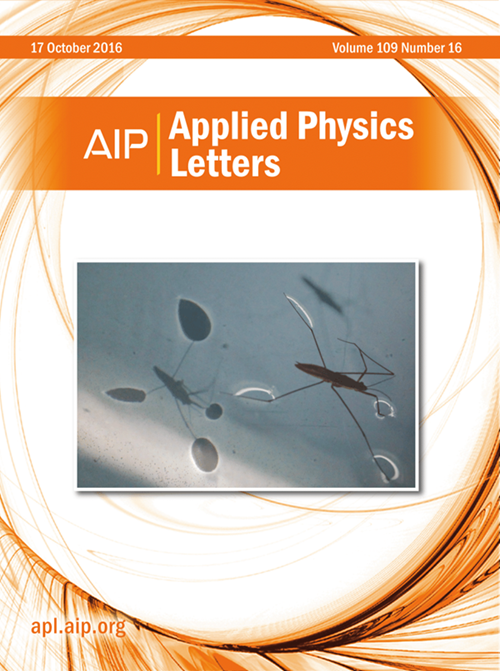Kinetics of short-range order formation in GeSn alloy: MBE vs CVD
IF 3.5
2区 物理与天体物理
Q2 PHYSICS, APPLIED
引用次数: 0
Abstract
Recently, short-range order (SRO) has attracted significant attention, challenging the conventional view of the atomic positions in alloys being random. Furthermore, the presence of SRO has been predicted to have profound effects on the electronic and topological properties of group-IV alloys, offering a different direction in designing group-IV materials for photoelectronic and quantum devices. However, due to the limited understanding of the formation mechanisms, developing effective methods to manipulate SRO in epitaxy is still challenging. To address this, we propose a mechanism for the GeSn alloy, revealing that surface diffusion plays a key role in SRO formation. Building on this mechanism, we show that the distinct surface conditions in MBE and CVD lead to the formation of SRO with enhanced Sn–Sn pairing in MBE-grown samples, while CVD-grown samples remain random alloys. Our findings provide an initial understanding of the kinetic process of SRO formation, providing guidance for the design of experiments to manipulate SRO.GeSn合金的短程有序形成动力学:MBE vs CVD
近年来,近程有序(SRO)引起了人们的广泛关注,挑战了合金中原子位置随机的传统观点。此外,预计SRO的存在将对iv族合金的电子和拓扑性能产生深远的影响,为设计用于光电子和量子器件的iv族材料提供了不同的方向。然而,由于对形成机制的了解有限,开发有效的方法来控制外延中的SRO仍然是一个挑战。为了解决这个问题,我们提出了GeSn合金的机制,揭示了表面扩散在SRO形成中起关键作用。基于这一机制,我们发现MBE和CVD中不同的表面条件导致MBE生长样品中Sn-Sn配对增强的SRO形成,而CVD生长样品仍然是随机合金。我们的发现为SRO形成的动力学过程提供了初步的认识,为操纵SRO的实验设计提供了指导。
本文章由计算机程序翻译,如有差异,请以英文原文为准。
求助全文
约1分钟内获得全文
求助全文
来源期刊

Applied Physics Letters
物理-物理:应用
CiteScore
6.40
自引率
10.00%
发文量
1821
审稿时长
1.6 months
期刊介绍:
Applied Physics Letters (APL) features concise, up-to-date reports on significant new findings in applied physics. Emphasizing rapid dissemination of key data and new physical insights, APL offers prompt publication of new experimental and theoretical papers reporting applications of physics phenomena to all branches of science, engineering, and modern technology.
In addition to regular articles, the journal also publishes invited Fast Track, Perspectives, and in-depth Editorials which report on cutting-edge areas in applied physics.
APL Perspectives are forward-looking invited letters which highlight recent developments or discoveries. Emphasis is placed on very recent developments, potentially disruptive technologies, open questions and possible solutions. They also include a mini-roadmap detailing where the community should direct efforts in order for the phenomena to be viable for application and the challenges associated with meeting that performance threshold. Perspectives are characterized by personal viewpoints and opinions of recognized experts in the field.
Fast Track articles are invited original research articles that report results that are particularly novel and important or provide a significant advancement in an emerging field. Because of the urgency and scientific importance of the work, the peer review process is accelerated. If, during the review process, it becomes apparent that the paper does not meet the Fast Track criterion, it is returned to a normal track.
 求助内容:
求助内容: 应助结果提醒方式:
应助结果提醒方式:


